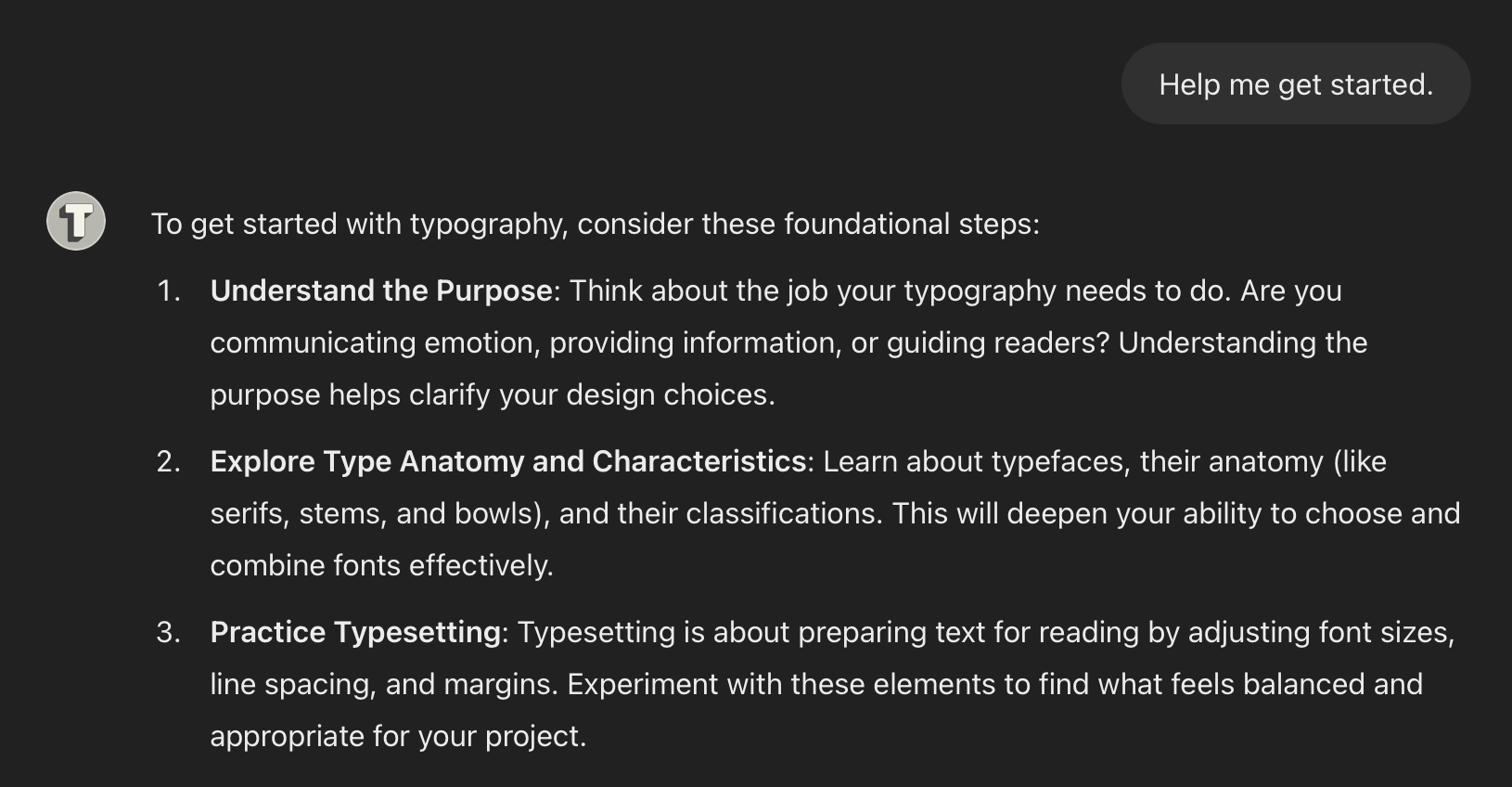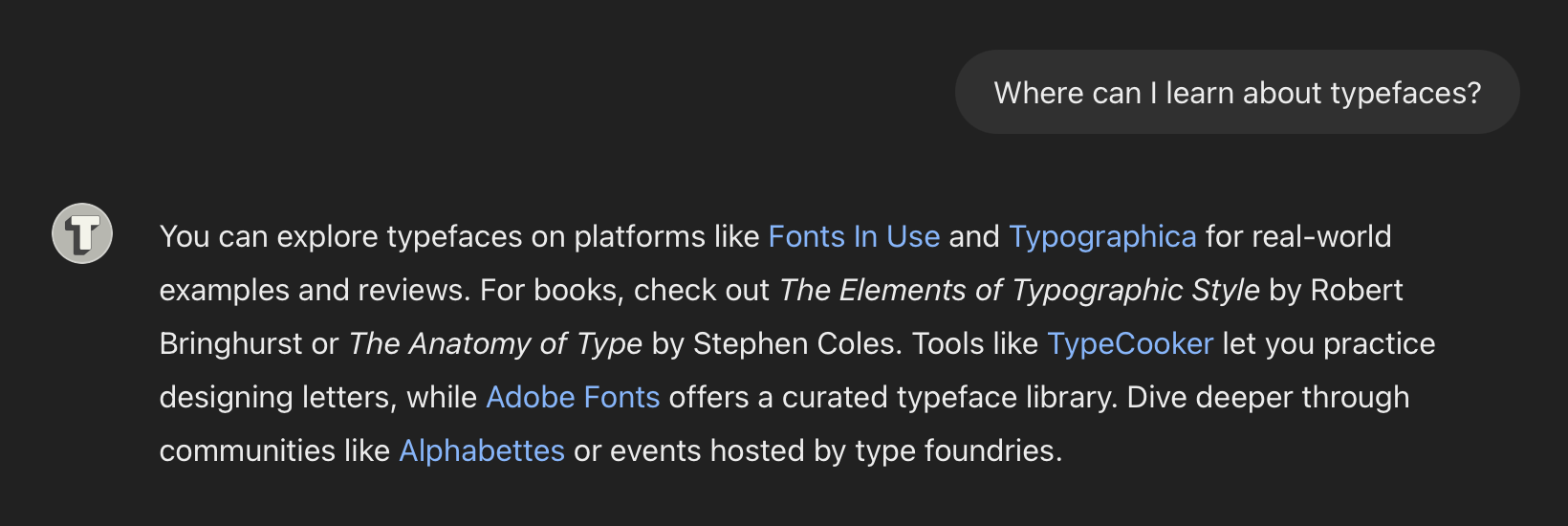Typography Advisor GPT
Introducing Typography Advisor. As an experiment, I made this custom version of ChatGPT to help when I’m designing with text and working on layouts. Like regular ChatGPT, I find it most useful when getting started or when I feel stuck — it can inform decisions, suggest next steps, and aid in exploration.

Intelligence technologies can accelerate our natural design habits. We already act as our own advisors by observing, referencing schema, and balancing unknowns in order to make predictions and discover new possibilities. With technology assistance, we can challenge ourselves to grow by considering advice that might not naturally come to mind. Like a second brain.
Typography Advisor is different than plain ChatGPT in a few ways that I hope make it more useful and tolerable: I have instructed it to be thoughtful, to limit jargon, and to link out to good resources often rather than trying to answer every question. Its strengths are in clarifying concepts, promoting learning, encouraging study, and providing context.

To make that happen, I preloaded this GPT (that’s what ChatGPT calls custom versions: Generative Pre-trained Transformers, or GPTs) with knowledge of my writings on typography. Annoyingly, Typography Advisor now biases towards my writings because of this preloaded knowledge. I’ve added many instructions to try to quiet this, but it’s an ongoing struggle. I also don’t trust its code generation or image analysis yet, so I’ve added warnings to responses that involve those kinds of content.
It’s not perfect, but I thought Typography Advisor was worth trying as an experiment. If you test it out, tell me via email or social. ChatGPT doesn’t share any details about how people are using this, so direct feedback is the only way to improve.